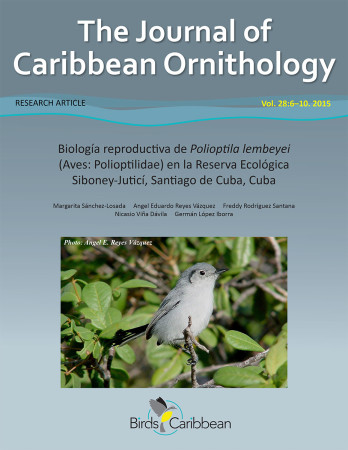
Three new species for Aruba, with notes on other significant sightings by Steven Mlodinow was the first research note, and includes the first documented sightings of the Least Bittern (Ixobrychus exilis), Swainson’s Flycatcher (Myiarchus swainsoni), and Veery (Catharus fuscescens), as well as sightings of seven other birds with fewer than five records for Aruba. This type of research underscores the value of observing and documenting bird life in the Caribbean, where our knowledge is increasing every year.
Reproductive biology of Polioptila lembeyei (Aves: Polioptilidae) in the Siboney-Juticí Ecological Reserve, Santiago de Cuba, Cuba is a research article about the Cuban Gnatcatcher, a species endemic to the island of Cuba. The team studied nests for two years to record data like the incubation and nestling periods, the number of eggs in each nest and the success rate. Although data like this has been known for many years for common species in North America and Europe, basic life history information for Caribbean endemics is often still unknown. The text of the article is in Spanish, but an abstract is available in English.
History of the Spotted Rail (Pardirallus maculatus) in Jamaica with first photographic documentation of breeding is another research note, this one following the history of a single species. After a sighting in the 19th century, the trail ran cold until the late 1970s, when a run of intermittent sightings began in a single area. Photographic documentation of breeding was finally obtained last year, while the size of the population and its relationship to other mainland and island populations of this species are still unknown.
All of these articles, and back issues to 2011 are currently available for free download at the Journal of Caribbean Ornithology, with more archives on their way in the coming months.
